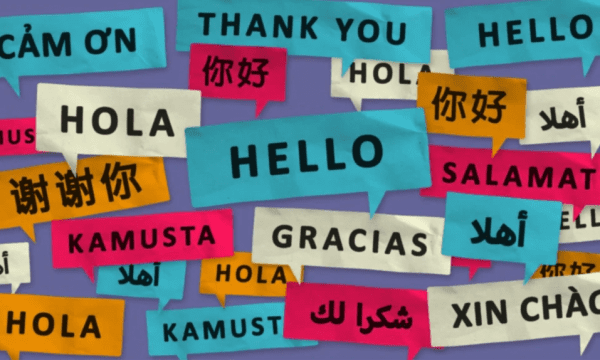In the United States, the number of people who speak a language other than English in the household tripled between 1980 and 2019, according to a report by the US Census Bureau. Almost 68 million people living in the United States speak a second language at home. In 1980, only 23 million people spoke a second language with their families in America.
“It shows the diversity that this country is known for,” says Dina Arid, a mother of three from California who, in addition to English, also spoke Arabic at home during her childhood. “So it’s good that not only English is spoken. There is a large group of immigrants here.”
Arabic is one of the five second most spoken languages in the United States. Arid, who speaks mostly English to her children, is trying to teach them Arabic as well.
“During my childhood, I had relatives who failed to learn Arabic. “While they’re not upset with their parents about it, they say they wish they could speak the language now,” she says.
Spanish is the second most popular language in the United States. More than 41 million people, 12 times more than the other most common second languages, speak Spanish at home. Hispanics are the largest minority group in the United States. More than half (55%) of Spanish speakers were born in the United States.
Chinese, Tagalog, and Vietnamese are among the five most spoken languages in America.
“My parents also spoke English at home, but they tried to preserve their language. During the day at school I spoke English, but at home in the evening I only spoke Vietnamese,” says Jenny Nguyen, a dental student in Virginia whose parents immigrated from Vietnam. “When I was younger, I didn’t understand its importance, but now I’m very happy that I can speak and write Vietnamese at such a good level,” she says.
She set her tongue when she traveled to Vietnam to provide free dental care to poor communities. Many of her peers who were part of this initiative were also Vietnamese-Americans.
“They couldn’t communicate well with the patients because they didn’t speak the language at a sufficient level,” says Jenny Nguyen. “I was one of the few young volunteers who could communicate with the patients,” she says.
According to the US Census Bureau, those who speak Chinese, Vietnamese, Tagalog and Arabic were more likely to be granted US citizenship.
Raymond John “R.J.” Mosuela, a health care recruiter in Virginia whose parents are from the Philippines, cannot speak their native language, but says he understands when they speak to him in their language.
“Tagalo, the main dialect of the language spoken in the Philippines, was spoken at home, but it was mixed with English,” says Mr Mosuela. “I am the youngest of three brothers. Two of my older brothers were born in the Philippines. I was born after my parents arrived in America. My mother would speak to me in Tagalog and I would answer in English,” he says.
Passing on the parents’ native culture to his children is important to Mr. Mosuela.
“When I get married and have children, maybe not the language, but at least I will try to preserve our food and cultural traditions,” he says.
Cathy Erway, a New York food writer, is using a smartphone app to learn the Mandarin dialect of her native Chinese.
“It’s interesting that my father, who is white American, also speaks Chinese,” Ms. Erway says. “My parents communicated in Chinese when they didn’t want the children, me and my brother, to hear what they were saying. So they treated it like a secret language,” she says.
While more people speak a second language at home, the U.S. Census Bureau reports that the number of people who speak only English at home also increased, by about 25 percent, from 187 million in 1980 to 241 million in 2019.









Can you be more specific about the content of your article? After reading it, I still have some doubts. Hope you can help me. https://accounts.binance.com/sv/register-person?ref=UM6SMJM3
Your point of view caught my eye and was very interesting. Thanks. I have a question for you.